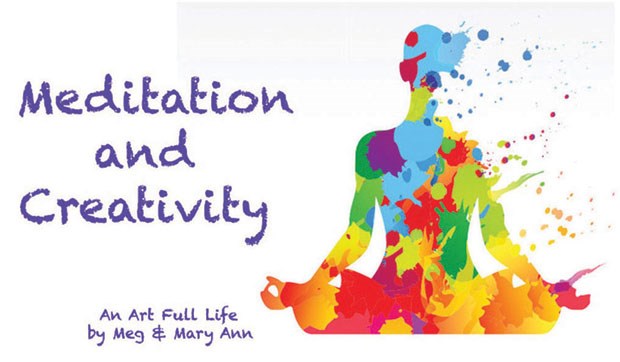To stop the mind from operating on auto-pilot and expand, we need to find the time for quiet. The practice of meditation is over 2,500 years old.
Meditation can not only reduce stress, improve health, enhance performance and make us happier, it can also make us more creative. If you are diligent and consistent in your efforts, it will reveal its true essence and can literally transform your life and your creative mind.
Here are 10 scientifically proven benefits of meditation:
1. Overcome stress (University of Massachusetts Medical School, 2003)
2. Boost your creativity (ScienceDaily, 2010)
3. Improve your sex life and increase your libido (The Journal of Sexual Medicine, 2009)
4. Cultivate healthy habits that lead to weight loss (Journal Emotion, 2007)
5. Improve digestion and lower blood pressure (Harvard Medical School)
6. Decrease your risk of heart attack (The Stroke Journal, 2009)
7. Help overcome anxiety, depression, anger and confusion (Psychosomatic Medicine, 2009)
8. Decrease perception of pain and improve cognitive processing (Wake Forest University School of Medicine, 2010)
9. Increase your focus and attention (University of Wisconsin-Madison, 2007)
10. Increase the size of your most important organ — your brain! (Harvard University Gazette, 2006)
If you are a beginner, however, it can be challenging to sit still. Meditation can also be boring, but the trick to realizing its benefits is in hanging in there and practicing daily in the midst of a hectic life.
Here is a basic, yet very effective and short meditation exercise that everyone can do in just 10 minutes a day:
1. Find a comfortable, quiet position on the floor, on a pillow, lying down or sitting in a chair. The most important thing is that your spine is straight.
2. If you like to have music that’s perfectly fine.
3. Keep your eyes slightly open at first, gaze downward, to a spot on the floor four to six feet in front of you. Your gaze is soft and you are taking everything in, but seeing nothing.
4. Jaw is relaxed, mouth closed, lips slightly parted, shoulders and belly relaxed
5. As you sit, pay attention to your breathing, listen to your breath. Notice it but don’t concentrate on anything in particular.
6. Let your thoughts come and go, allow them but don’t grab on to them. If you find yourself paying attention to your thoughts, simply say to yourself, “That’s interesting.” And bring your mind back to your breath.
7. Sit and observe, without judgement, or attachment the ideas and thoughts that flow through your mind, giving things a chance to pay and always watching, never forcing, over-thinking or manipulating your ideas.
This exercise benefits everyone. Whether you have been creating for years, or just starting out, this is the single most important exercise that you can do to support, nourish and grow your creativeness.
It costs you absolutely nothing but 10 minutes of your time a day.
In your quiet mind, ideas grow. They are captured by you and explored. Sitting in quietness allows us to go down into our mind, where the real creative core sits. When we sit back and allow the mind to eliminate the over-thinking and useless info that we all hold onto, it makes room for the new ideas from our wild creative side to come forward, be nourished and grow into ideas.
Once you have finished your exercise, grab a pen and paper and write down what you saw. Somedays it will be nothing. Somedays it will be everything.
Please send us a note in a few weeks to let us know if this practice helped your creativeness. Send it to [email protected] or [email protected].
Meg Neufeld is a cultural anthropologist, practicing mixed-media artist and program director at Alongside You, a health organization that offers a multi-disciplinary approach to health. Mary Ann Burrows is an artist and a creativity coach at Spark. She is the president and founder of Artists in the Village non-profit society.



